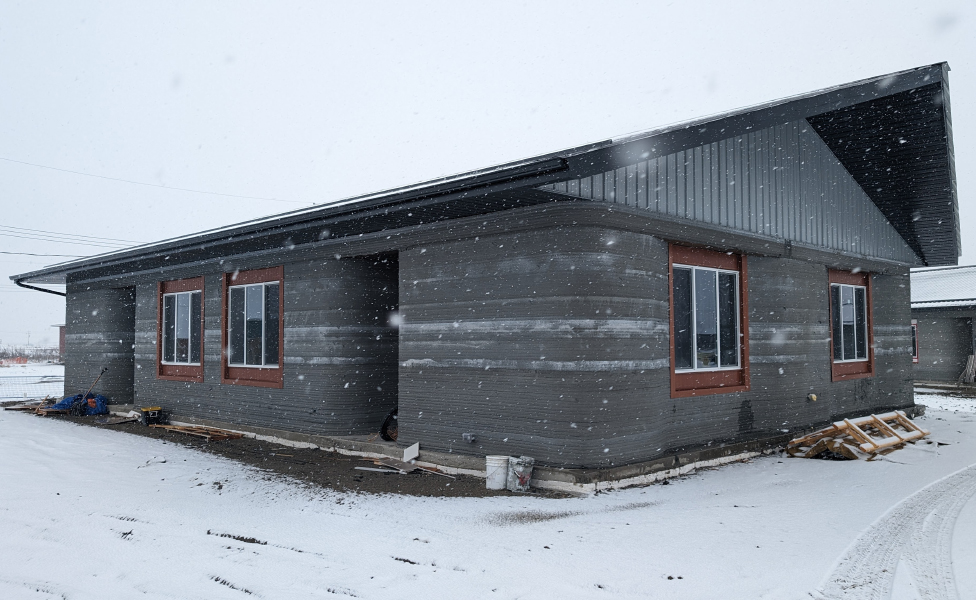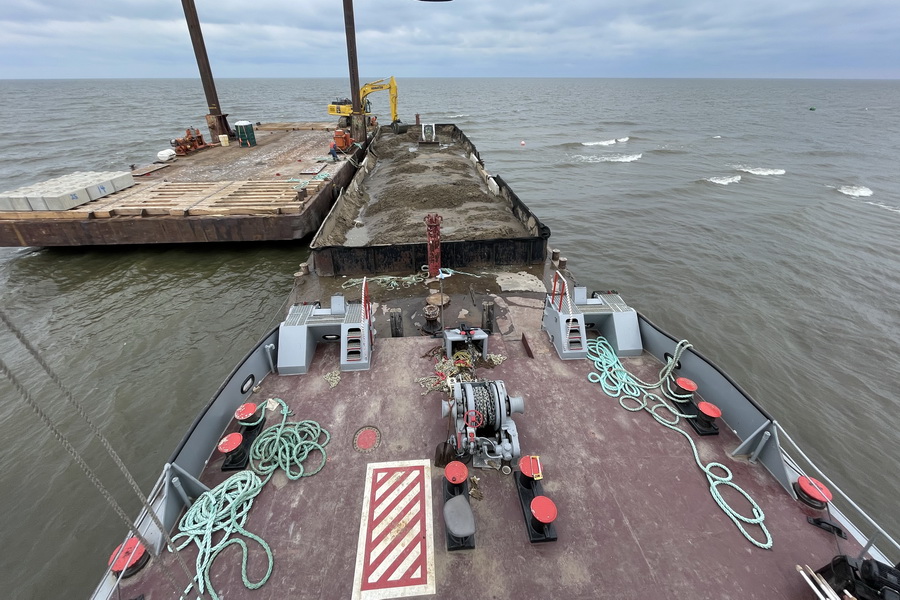Sustainable rehabilitation restores functionality of Edmonton’s Trestle No. 3 Pipe Bridge
April 3, 2024
Owen Mierke
Share
Expertise

EPCOR’s Northeast Sanitary Interceptor Sewer Trunk provides essential wastewater conveyance in the City of Edmonton's northeast area. Originally constructed in 1964, the Clareview Sanitary Trunk section of the interceptor conveys wastewater flows from the north side of the Kennedale Ravine to the Alberta Capital Region Wastewater Commission wastewater treatment plant.
The Trestle No. 3 bridge supports a 900 millimetre diameter steel pipe section of the trunk sewer and a maintenance walkway at the crown of the pipe across the Fraser Ravine. Trestle No. 3 is approximately 72 metres long with a maximum height of 23 metres. The structure consists of a steel frame supported by two concrete abutments and four piers with concrete spread footings. The sections of the trunk sewer immediately upstream and downstream of the trestle bridge are comprised of non-reinforced concrete pipe.
In 2019, as part of its condition assessment and asset management program, EPCOR determined that the pipe required rehabilitation. EPCOR retained Associated Engineering, with Thurber Engineering as its geotechnical subconsultant, to undertake conceptual, preliminary, and detailed design of measures to rehabilitate or replace Trestle No. 3, replace the steel pipe, and rehabilitate the concrete pipe.

Project Manager, Owen Mierke, tells us, "The location of the pipe bridge in a steeply sloped terrain complicated rehabilitation and replacement measures. The steep slopes are not traversable by heavy construction equipment. In addition, a recessed pipe bridge below the top of bank, erosion concerns, and slope stability, all contributed to the project’s challenges."
The project team worked together to implement a series of innovative designs and construction methodologies to overcome the challenges posed by lack of access and the steep ravine slopes, which limited the ability to use heavy equipment.

Owen shares, "The contractor came up with a creative solution to use a scaffolding gantry constructed between the top of the bank and the trestle, which facilitated removing and replacing the steel pipe. Construction teams installed the manholes, gabions, and rip rap armouring by hand using small equipment."
Scaffolding gantry allowed workers to safely traverse the steep slopes and geotextile curtains protected workers from falling debris

Restoration measures were carefully considered to prevent future erosion of the ravine slopes under the trestle.
"Bioengineering techniques including live staking and rough and loose soil treatment were implemented to slow the flow of stormwater and quickly re-establish vegetation on the ravine banks, promoting stability and naturalization into the existing environment."

Throughout design and construction, the team considered risks and identified mitigation strategies. The contractor mitigated risks to slope stability by employing alternative construction methodologies. Safety risks associated with placing and filling gabion baskets were managed through a wagon and pulley system, as well as staged conveyors. Geotextile curtains were placed on the steep slopes to provide protection from falling debris.
Proactive planning and a strong communication plan helped to minimize impact on neighbouring residents and users of the adjacent trail system.
The completed Trestle No. 3 Rehabilitation project restored the trestle, addressed erosion issues under the trestle, replaced the 900 millimetre diameter steel pipe on the trestle, and relined the sewers upstream and downstream of the trestle. The rehabilitated Clareview Sanitary Trunk will serve Edmontonians for many decades to come.







